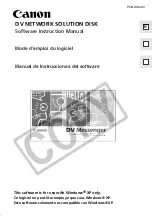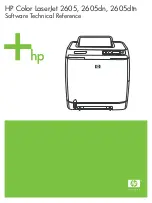
18
Getting Started
second_nc.connect("myserver.mydomain.com/support/session2");
second_so = SharedObject.getRemote("CustomerInfo", second_nc.URI, false);
second_so.connect(second_nc.URI);
Instance name
room_01
is frequently used, but you can use any string for an instance name
that makes sense in your application.
You can configure several settings related to application instances. In the Application.xml file,
you can configure the maximum idle time before the server unloads an instance. In the
Vhost.xml file, you can configure the number of clients that can connect to the virtual host
hosting an application and the number of instances that the virtual host can load.
For more information on using instance names, see the
NetStream.publish()
entry in the
Client-Side ActionScript Language Reference for Flash Media Server 2.
For information on making remote shared objects available to multiple applications, see the
SharedObject.getRemote()
entry in the
Client-Side ActionScript Language Reference for
Flash Media Server 2
.
File types used by Flash Media Server
In addition to the file types that Flash creates and uses (FLA, SWF, and SWD), Flash Media
Server uses or creates the following file types:
ASC and JS files
Server-side script files that you write or that are provided with Flash
Media Server. When you create server-side scripts, use the Flash ActionScript editor or a
JavaScript editor and place the scripts in the subdirectory you create for your application in
your registered application directory, for example, /applications/chat_app, or in a scripts
subdirectory, for example, /applications/chat_app/scripts.
Flash Media Server provides a script library in the /scriptlib directory that contains server-side
scripts for components and Flash Remoting services. When you use components or Flash
Remoting with Flash Media Server, include, or load, the appropriate scripts from /scriptlib
into your application’s server-side script file.
The location of the /scriptlib directory is
specified in the
<ScriptLibPath>
tag in your Application.xml configuration file. For
information on loading the components.asc file to use media components, see
“Creating a
development environment” on page 13
.
ASE files
Server-side script files that are compiled as binary files. See
“Archiving and
compiling server-side script files” on page 86
.
FAR files
Server-side script files that are archived into one self-contained file. See
“Archiving and compiling server-side script files” on page 86
.
Summary of Contents for FLASH MEDIA SERVER 2-DEVELOPING MEDIA
Page 1: ...Developing Media Applications ...
Page 6: ...6 ...
Page 10: ...10 About This Manual ...
Page 36: ...36 Flash Media Server Architecture ...
Page 80: ...80 Debugging and Monitoring Applications ...
Page 106: ...106 Application Development Tips and Tricks ...
Page 114: ...114 ...
















































